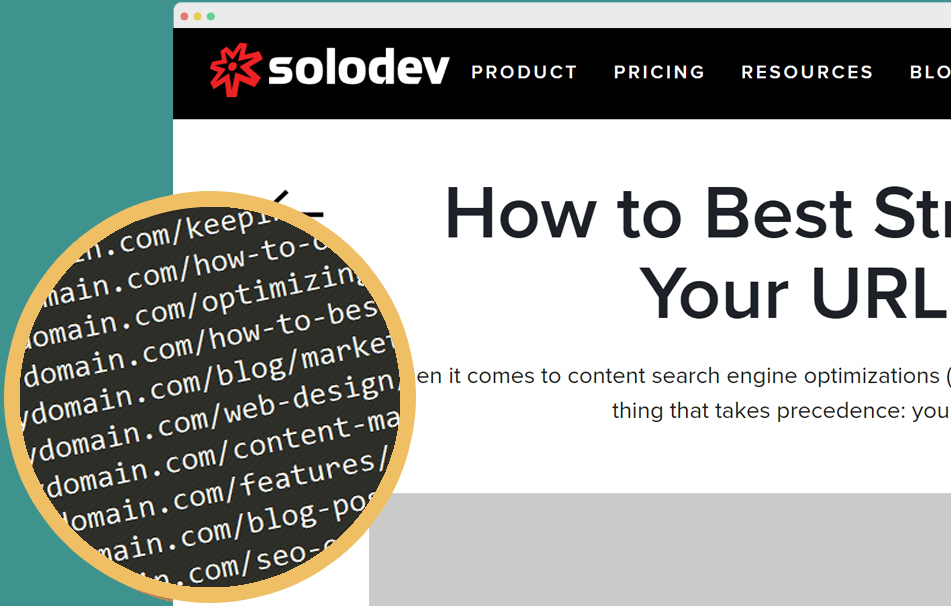How to Best Structure Your URLs
When it comes to content search engine optimizations (SEO), there’s absolutely one thing that takes precedence: your URL.
When it comes to content search engine optimizations (SEO), there’s absolutely one thing that takes precedence: your URL. There’s a simple and good reason for this fact. Every time you post you’re a link to your content, be it an internal link, on an external website, or on social media, the one thing that will remains constant is the page’s URL. Because of this, your URL is one of the most essential elements when it comes to content optimization.
While other elements, such as keyword density and backlinks, all play crucial roles in creating fully optimized content, the first place you should start is with your URL. When it comes to SEO, think of the key components a search engine will index on the first pass of content and, unequivocally, you come to the conclusion that your URLs matter.
With the importance of URL structure an established fact, what are some of the best practices when it comes to creating them? Below are some key points you will always want to consider when generating page URLs.
Keep Them Readable
This point seems intuitive but can be easily overlooked, especially if using a Web Content Management System that auto-generates URLs. It’s important to make sure URLs are easily digestible to actual people so that they can determine the overall topic of the page and make quick determinations as to whether or the content matches what they are searching.
Some web content management systems auto-generate URLs which, depending on the WCMS involved, could add unnecessary parameters, query strings, or database IDs to the URL. While this may be necessary within the framework of the WCMS, it nonetheless makes them harder real users to discern.
Add Keywords but Don’t Stuff
Related to keeping your URLs readable is to make sure they included the important keywords or topics the body of content covers. This is simply practical. URL structures should include the top level topics of the content so that (1) they can be properly indexed in relation to the associated keyword and (2) they indicate to the user that content related to that keyword lives on that page.
That is to also say don’t just stuff your URLs with keywords. You may think you’re doing yourself a service but ultimately you simply serve to dilute your keyword density and make it harder to actual optimize for any of the keywords. Keyword stuffing in URLs is also pretty obviously gimmicky and may deter legitimate site traffic as it could be perceived as an indicator of poor quality content.
A simple rule of thumb is that your URL should, at the very least, contain your page’s meta title. While the page title and URL don’t have to match exactly (especially if the Title is longer), it’s absolutely essential to make sure the priority keywords found in the title are also found in the URL.
Use Category and Folder Structures
A great idea of organizing your content is to create a set of categories or file system folders that can house related content. This not only helps keep your site content in a clear hierarchical structure, but gives your users clear references to where they are within your sitemap. Keeping your users as well informed as possible to their location within your site is key to help encourage consumption of the content.
Using category or folder structures also gives you the benefit of being able to optimize for the category keyword. Further, it creates a direct associative link between the category and the piece of content.
Keep URLs Short…ish
Combining all of the above points, it’s important to remember that URLs should not trail on and on. Technically, there’s a 2,048 character limit with your URLs but, in practice, your URLs should be much, much shorter. In fact, your URLs should be in the order of under 100 characters.
There’s two key issues at play with this general rule of thumb. First, at a quick glance users and search engines alike should be able to relatively determine the subject of the page’s content. The longer your URL, the longer it takes to process this information and this hesitation can be the make-or-break influencer on whether or not someone clicks on a given link.
Second, if you hover over a link most browsers will show you the target URL of the link. These browsers will often trim the URL from view if they’re too long before, after some period of time, revealing the full URL structure. Again, this hurts the ability of a given user to make a determination as to whether or not the content will meet their needs.
Standardize your URL Structures
When it comes to URL optimization, it’s important to make sure your URLs follow the same rules and that they incorporate contemporary best practices. Some essential components of this standardization include:
- Using hyphens (preferred) or underscores to separate words
- Keeping everything lowercase; URLs are case sensitive and even a single letter capitalized can drive up your 404 errors
- Category or folder elements should be 1-2 words and no more
From a practical standpoint, it’s much easier to manage a website if all of the URLs following the same set of rules. From the user’s standpoint, creating this standardization helps ground the user in your sitemap and helps cut down on the time it takes to process the information inherent in a URL.
Wrapping it All Up
None of these URL optimization practices is overly complicated which means we as web designers, content producers, and digital marketers need to follow these guidelines every time we create and post content. As counter intuitive as it may seem, it’s a good idea to temporarily place the concept of “search engines” on hold when creating effective URLs. The most important audience is the end user, and making URL structures that they can easily decipher is priority number 1, 2, and 3 in your web design projects.
That being said, accurate and concise URLs will naturally provide an organic SEO boost. Happy structuring!







